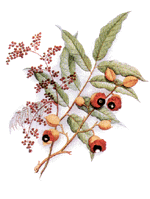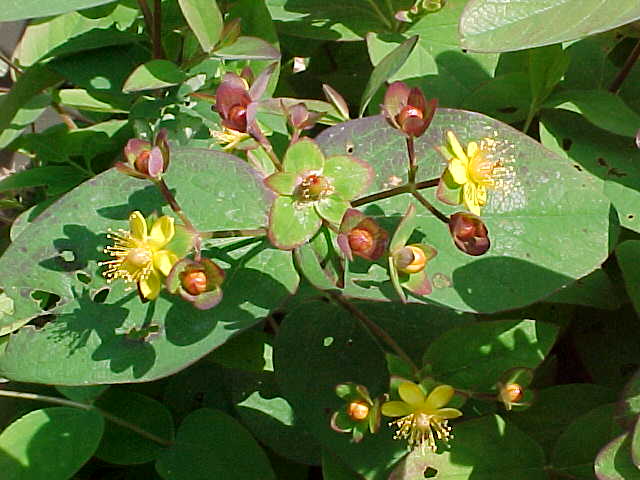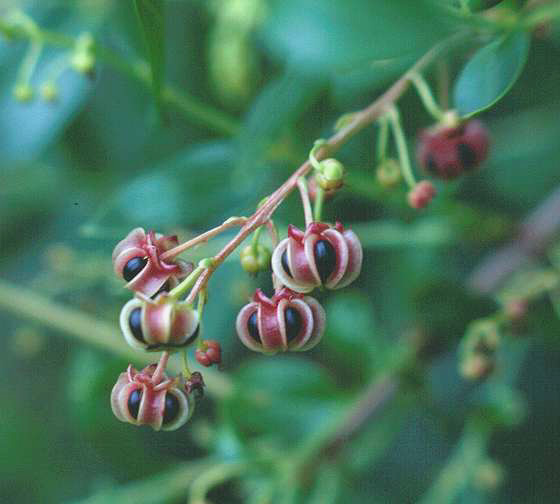
|
Taro (Colocasia esculenta). All parts of this popular
polynesian food crop are poisonous, so the root and leaves
must be cooked properly before being eaten. Even if eaten
when only partly cooked, it will burn the throat. It is a
member of the poisonous arum lilly family.

Back to Top
|

|
Thorn apple or datura (Datura stramonium). The black
seeds are sometimes eaten and contain a powerful, dangerous
drug, as do other parts of the plant. This weed has white
trumpet flowers and appears in gardens and waste places in
summer. The name thorn apple is sometimes wrongly applied to
angel's trumpet, which belongs to the same section of the
nightshade family, although it looks quite different.
Back to Top
|

|
Titoki (Alectryon excelsus). The round black seeds in
their scarlet cup are a familiar sight in the Auckland
region, and this striking colour contrast appeals to all
ages. Titoki is included because of its attractive fruits
and the uncertainty as to whether or not they are toxic. It
is sensible to avoid it because many members of the soap
tree family are poisonous.

Back to Top
|

|
Tropical periwinkle (Catharanthus roseus, commonly known
as Vinca rosea). An annual with pink or white flowers.
Although an important medicinal plant, tropical periwinkle
is very poisonous. It is a member of the oleander family
that is mainly grown in mild northern areas.

Back to Top
|

|
Turutu or blueberry lily (Dianella nigra). This native
plant in the flax family has attractive violet berries
reported as being poisonous. Australian species are
sometimes grown, especially in Auckland, and their berries
may also be poisonous.

Back to Top
|
|

|
Tutsan (Hypericum androsaemum). This small shrub is often
seen in bush remnants and plantations. Although not as
poisonous as some other Hypericum species, such as the
well-known St. John's Wort (H. perforatum), the black
berries should not be eaten.

Back to Top
|
|

|
Tutu (Coriaria species). All species are very poisonous.
The fleshy black berries should be avoided, because the
seeds inside them are poisonous. It grows in bush remnants
and margins, in scrub, and often in places modified by
humans, like plantations. The usual lowland species is C.
arborea, and in mountains this species grows with the
smaller C. sarmentosa.

Back to Top
|
|
|
|
|
|
|
|
|
|